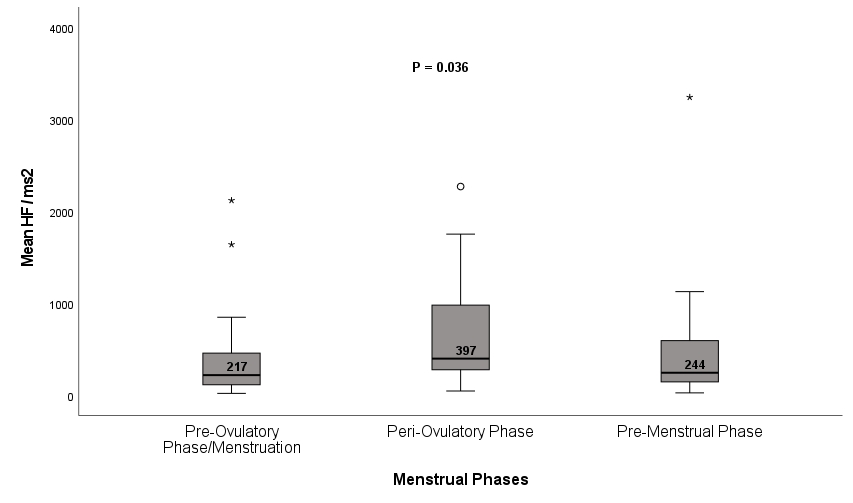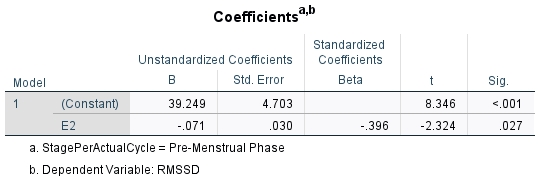Introduction: Heart rate variability (HRV) nowadays is used as an important measure of overall cardiac health and cardiac risk factors. It also relates to better fertility and menstrual regularity in reproductive females, and postmenopausal females are associated with lower heart rate variability compared to reproductive females. There is controversy about the differences in HRV across the menstrual cycle and its correlation with reproductive hormones. The menstrual phase was measured in most studies based on the day of the last menstrual period only, without regard to cycle length.
Objectives: This study aims to compare the HRV parameters between three different phases of the menstrual cycle based on the next cycle and actual cycle length, and to correlate the level of HRV parameters with Estradiol, progesterone, and estradiol/progesterone (E/P) ratio.
Subjects and Methods: In a 103 healthy reproductive female with regular menstrual cycle, after informed consent, participant preparation, and filling questionnaire, HRV parameters were assessed using heart rate sensor and the data for both time domain (RMSSD, SDNN, and mean RR-interval) and frequency domain (LF, HF, and LF/HF) were computed. The blood was received from each participant, and serum Estradiol and progesterone were analyzed. The subjects were divided into three menstrual cycle phases: day 1-11 regarded as phase 1; pre-ovulatory/menstruation phase, 12-18 as phase 2; peri-ovulatory phase, and day 19-28 or till the first day of menses regarded as phase 3; pre-menstrual phase. The actual cycle day for each female was calculated by recording their next cycle from the study time point, and the data were back-extrapolated according to the day of the cycle and cycle length. The hormone levels and levels of HRV parameters between the three phases were assessed using the Kruskal-Wallis test, P ≤ 0.05. The correlation between parameters was found, and linear regression was used to find significant predictors of HRV parameters, P ≤ 0.05.
Results: The number of studied participants across menstrual phases is 41, 30, and 32, for phase 1, phase 2, and phase 3, respectively. Compared to other phases, estradiol and HF was significantly higher in peri-ovulatory phase (median HF at phase 1, phase 2 and phase 3: 217.3, 397.26, 243.83 ms2, P=0.036), and progesterone was higher at pre-menstrual phase and E/P ratio at pre-ovulatory phase, other parameters didn’t reveal statistically significant differences between menstrual phases. There is a significant correlation between most HRV parameters and estradiol, and the only significant independent negative predictor of HRV (by 19.0%, P = 0.008) and RMSSD (by 12.8%, P = 0.027) is E2 at the premenstrual phase.
Conclusions: There is a significant difference in HRV throughout the menstrual cycle, and HF, which is a measure of parasympathetic function and good overall health of the heart, is highest at the peri-ovulatory phase compared to other phases. The heart rate variability, especially RMSSD, can be used as an independent predictor of estradiol level and reproductive health of females.


